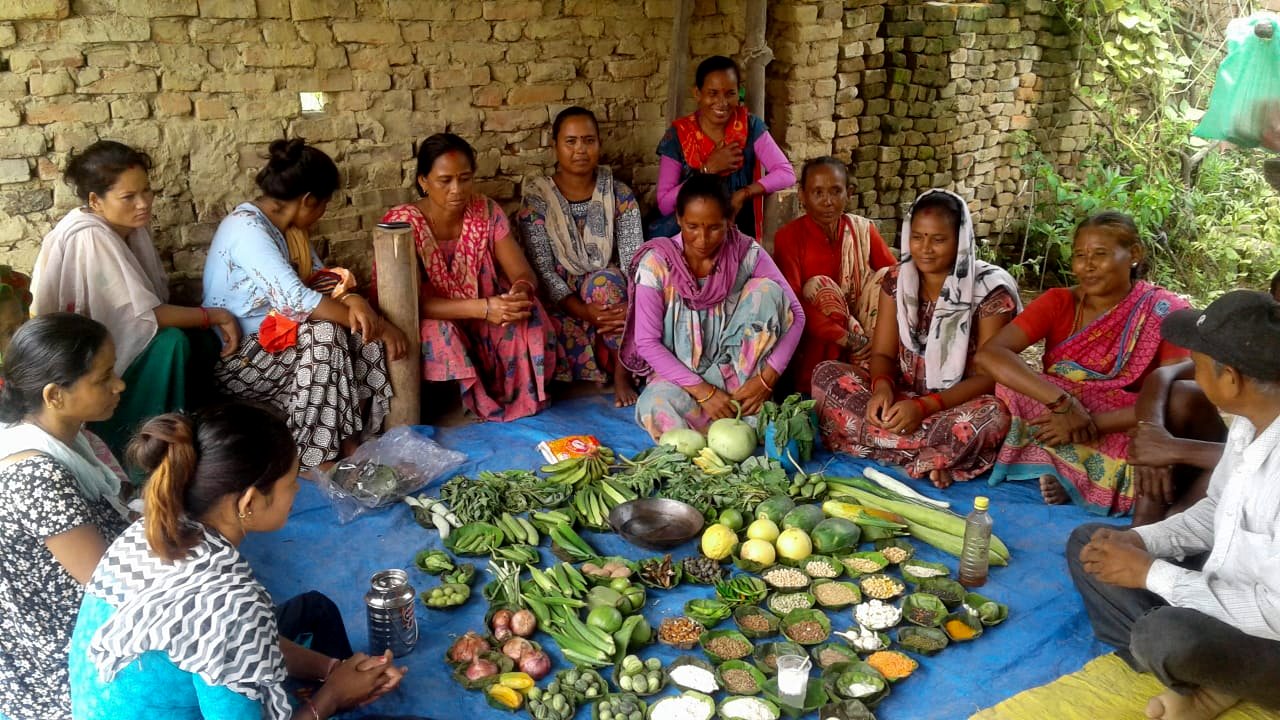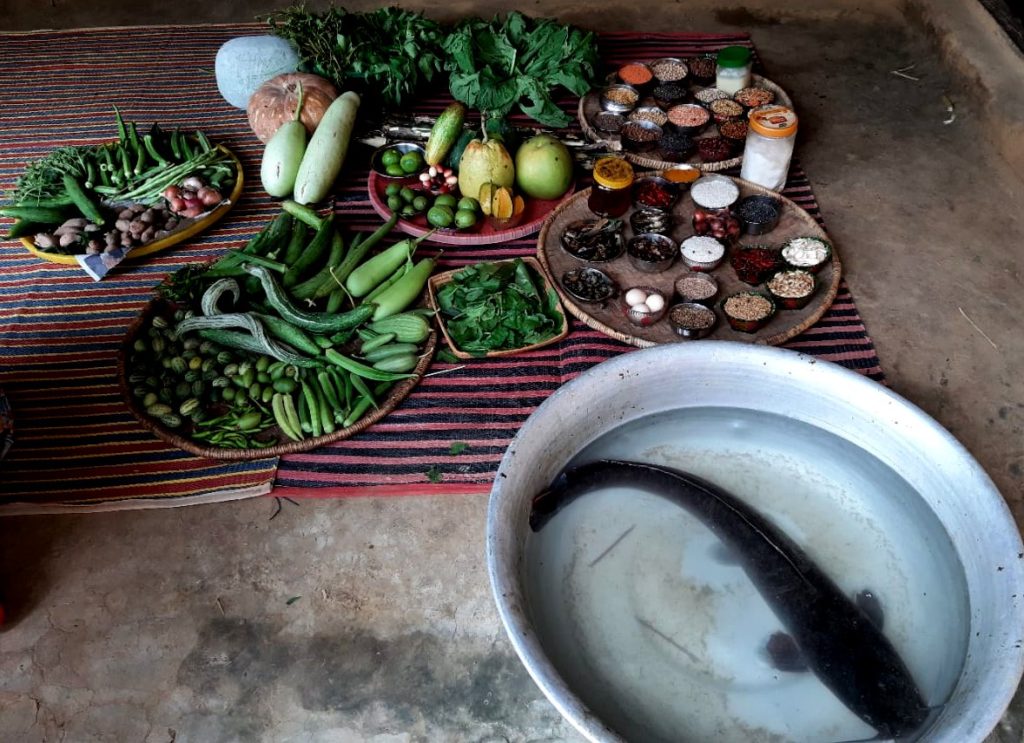
The living conditions of many have deteriorated and their vulnerability to Food and nutrition security increased post the COVID19 pandemic that affected the world population early this year. SAFBIN has been responding to the crisis since then, with immediate relief to ensure the food security and a relief packages that helped them to bounce back from the financial crisis as a result of the lockdown restrictions. While the overall goal of the programme is to contribute to the SDG 2 goal of ending hunger, one of its main objective is to double the farm production. This is being achieved through taking measures to increase the local diversity in her programme areas.
The four country teams under the programme have been working around the theme of food and nutrition security by promoting biodiversity as well as dietary diversity in the South Asian region.
Our team in Nepal conducted a month long nutrition campaign in September which included activities like Food mapping that not just created awareness but also helped the community to gauge on changes made in their diet in these three years since SAFBIN started its implementation.
Poor nutrition security and deficiency in daily diet of the smallholder farmers have been a significant concern in Nawalparasi, one of the SAFBIN focus areas in Nepal. Though the diversity in household diets that are locally available could significantly address this problem, however there is a limited understanding among the smallholder farmers on how nutritional needs can be met within their local ecosystem.

SAFBIN took an initiative to find the dietary diversity that are locally available in the villages through ‘mapping of nutritious foods’ in September 2020. The purpose of the event was to understand and make aware about the different diet available in the village its nutritious importance. The detail documentation will be submitted to the local government and authorities so that this will help prepare the nutrition plan in the rural municipality level.
The events were conducted in 9 different SAFBIN locations with the total participants of 358 smallholder farmers (298 females and 60 males) despite of hard times of covid 19. It was found that there was in an average of 51 different diet are available and consumed locally in the season of monsoon and summer. The major learnings of the events were that the farmers are more aware of the importance of nutrition security and nutritional values of the different diets they consume in a daily basis. The farmers also had an opportunity to discuss among themselves about the different nutritious foods that have been ignored. It was realized that this kind of events need to be continued in different seasons so that it will give a better picture of foods available throughout the year.